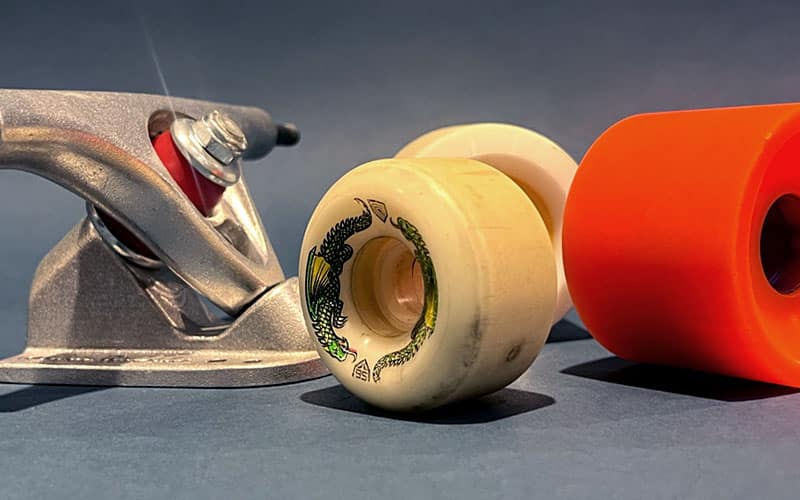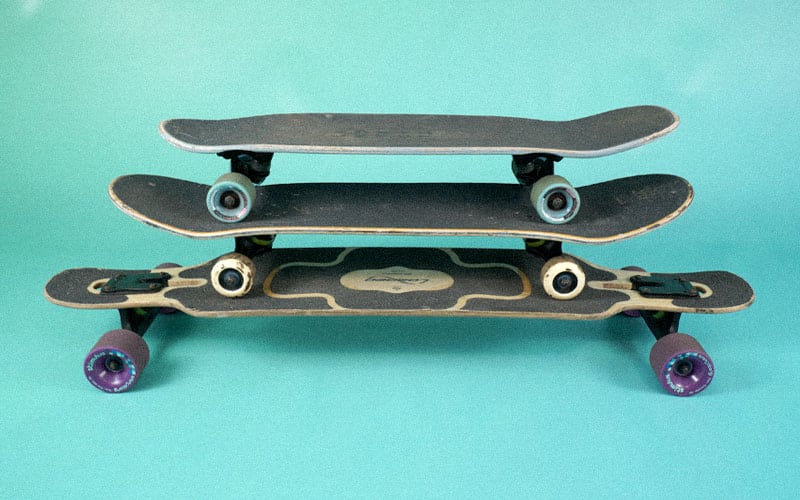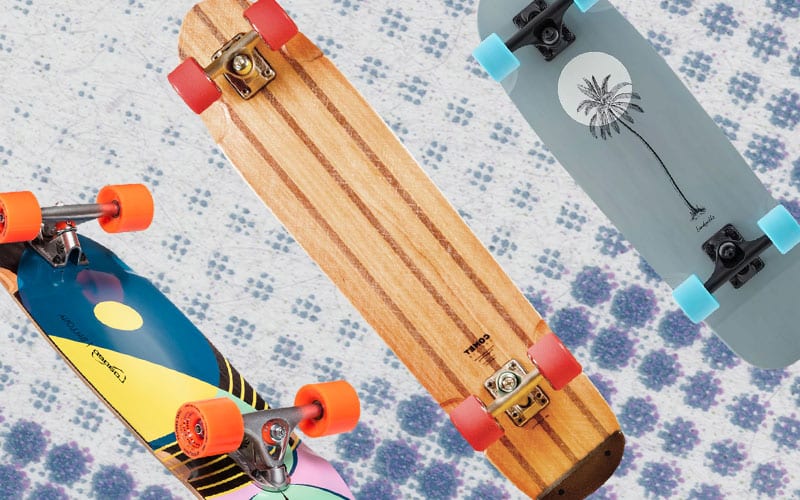A cruiser skateboard is similar to a traditional street skateboard but takes characteristics from a longboard. It usually has traditional kingpin trucks, a deck with a kicktail/nose, and larger, soft wheels. It’s exactly how it sounds – a skateboard made for cruising.
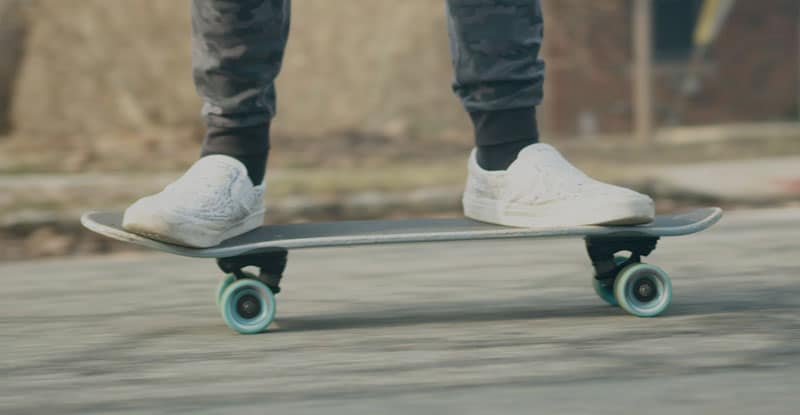
If you want to dive deeper, check this article comparing cruisers to longboards and skateboards.
The main differences are in the decks, trucks, and wheels.
Cruiser Decks
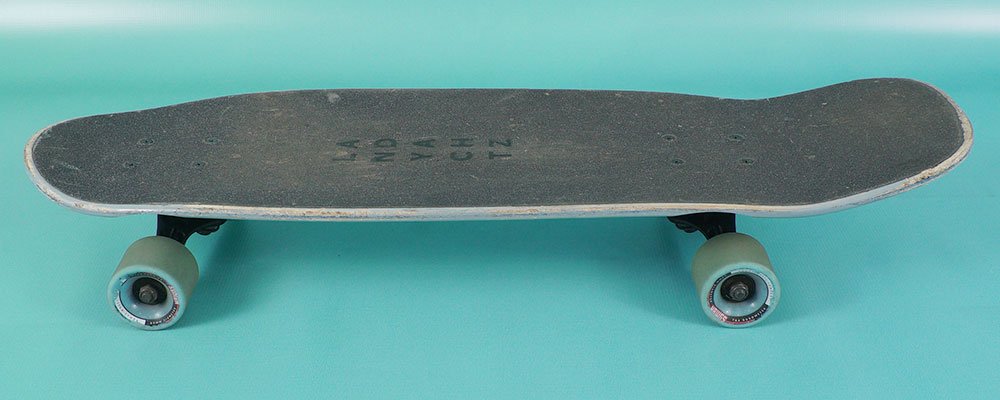
Cruiser skateboard decks typically have a nose and kicktail, allowing for ollies/flip tricks. You can see in the above image (Landyachtz Dinghy) that there’s a low-angle nose with a higher-angle kicktail. It won’t be as easy to do ollies/flip tricks as a traditional street skateboard. But it’s still functional enough to do them.
Cruiser skateboard setups are mainly used for cruising, carving, or commuting. So, having aggressive noses/kicktails isn’t necessary.
This isn’t always the case. Some cruisers use a street setup but swap out the wheels. An example is this Darkroom setup.

By entering your email address you agree to receive emails from Concrete Waves. We'll respect your privacy and you can unsubscribe at any time.
Cruiser Trucks
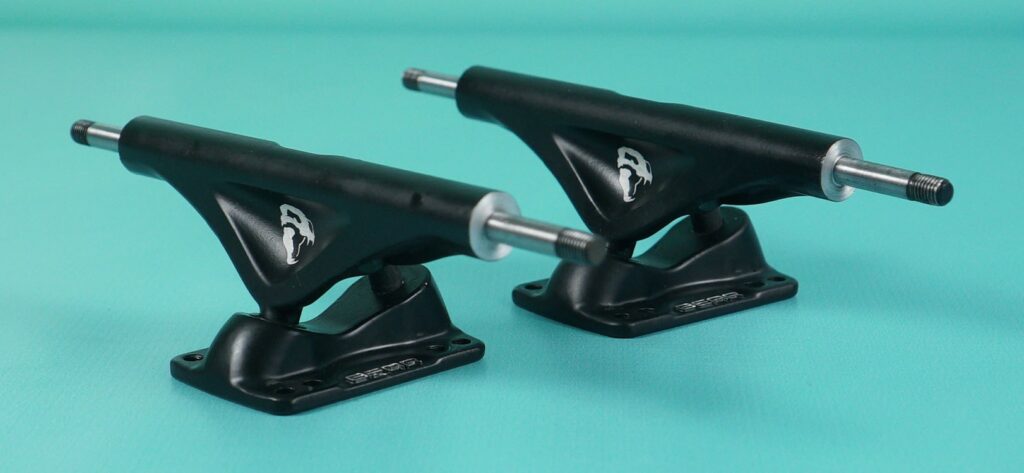
Cruiser skateboards typically have traditional kingpin trucks (tkps). They’re closer to the ground than reverse kingpin trucks (rkps), making it easier to do ollies/flip tricks.
There are exceptions, like the Loaded Ballona, which uses Paris RKP trucks. But typically, you’ll find tkps on cruiser setups.
Cruiser Wheels
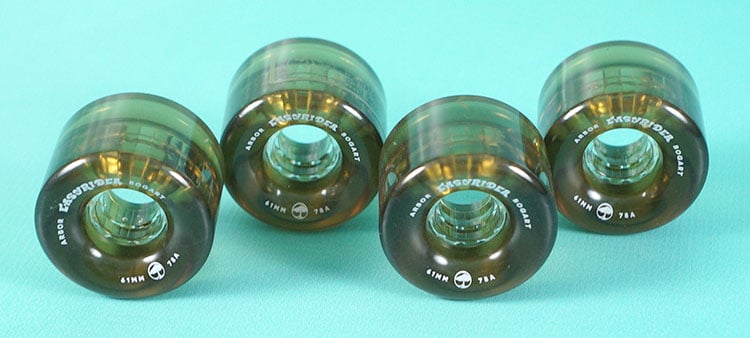
Cruiser wheels are typically 55-70mm with a softer durometer (77a-85a). There are a few characteristics to consider when picking a cruiser skateboard wheel. The size, durometer, lip profile, and core placement all affect how it performs.
What’s the difference between a cruiser and a street board?
A cruiser’s kicktails/noses are typically lower-angled than a street board. Cruisers are not as functional for ollies/flip tricks. If you’re mainly cruising/commuting, go for a cruiser.
Is a cruiser skateboard good for beginners?
Cruiser skateboards typically aren’t good for beginners because they’re small and less stable at higher speeds. You’ll probably be better off starting on a longboard. It all depends on what type of riding you’re looking to do.
Can you street skate a cruiser?
Yes, you can do ollies and flip tricks on a cruiser skateboard because most have a nose/kicktail. But, it won’t be as easy as a street skateboard since its main purpose is cruising. Compared to a longboard, it will be easier to do tricks.
Can you use a cruiser at a skatepark?
Yes, it’s possible to use a cruiser at a skatepark, however, it’s not the best option. The wheels are usually bigger, making it harder to grind on coping. The kicktails/noses are typically lower-angled, making it harder for ollies/fliptricks.

